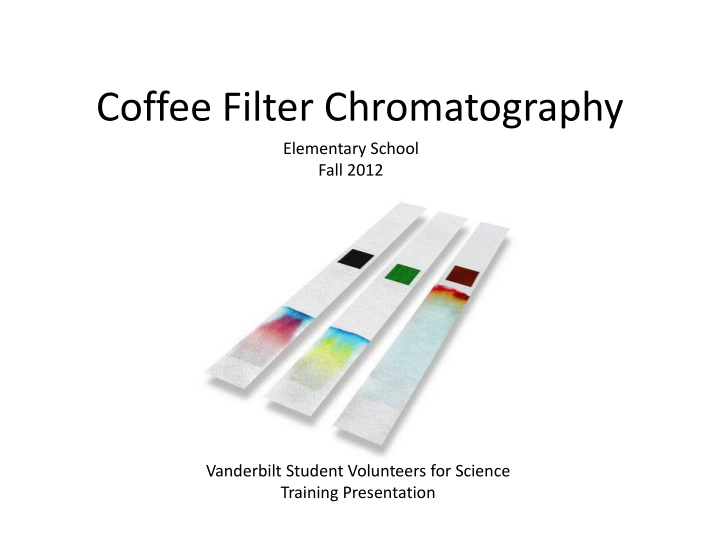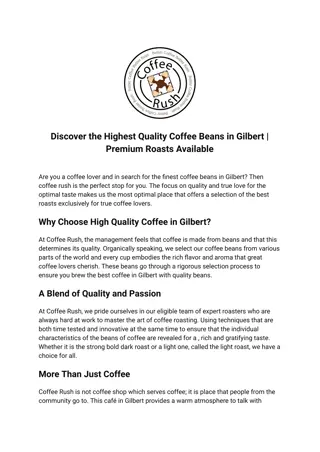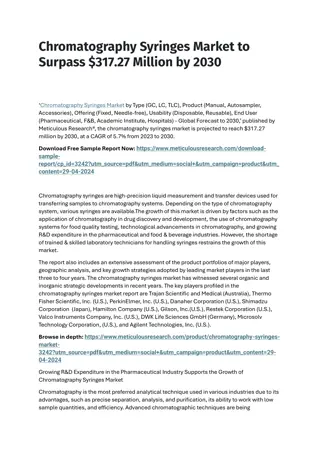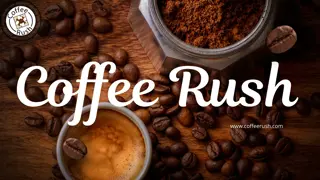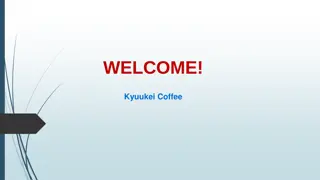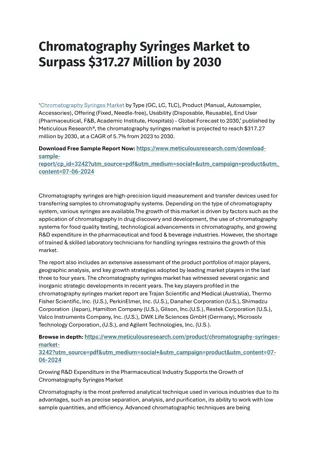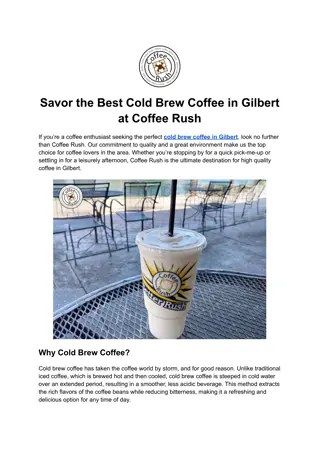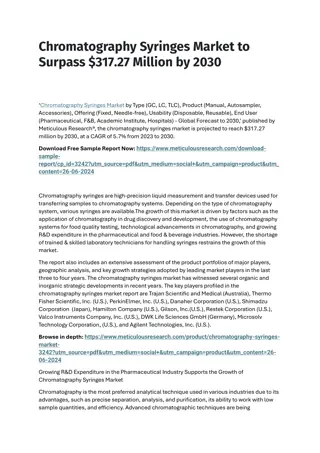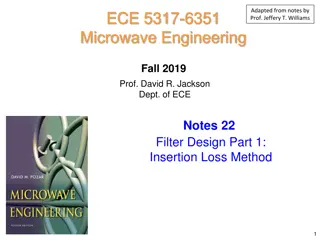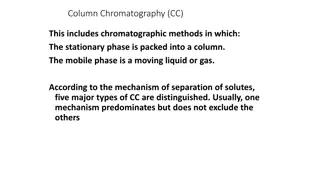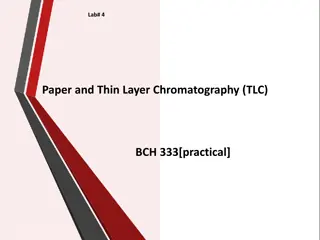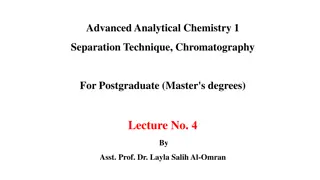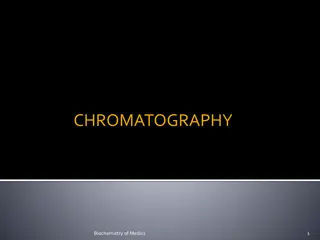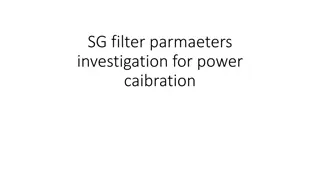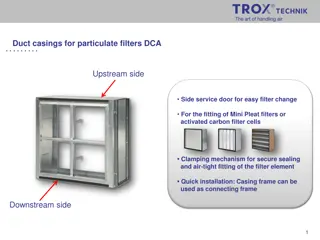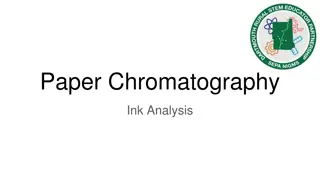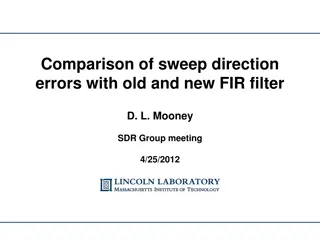Coffee Filter Chromatography in Elementary School Science Presentation
Discover the fascinating world of chromatography through an engaging elementary school science presentation. Learn about mixtures, separation techniques, and the process of paper chromatography using food coloring dyes. Explore how chromatography can separate different components in mixtures and witness demonstrations that bring this scientific concept to life.
Download Presentation

Please find below an Image/Link to download the presentation.
The content on the website is provided AS IS for your information and personal use only. It may not be sold, licensed, or shared on other websites without obtaining consent from the author.If you encounter any issues during the download, it is possible that the publisher has removed the file from their server.
You are allowed to download the files provided on this website for personal or commercial use, subject to the condition that they are used lawfully. All files are the property of their respective owners.
The content on the website is provided AS IS for your information and personal use only. It may not be sold, licensed, or shared on other websites without obtaining consent from the author.
E N D
Presentation Transcript
Coffee Filter Chromatography Elementary School Fall 2012 Vanderbilt Student Volunteers for Science Training Presentation
Definitions to Learn Mixtures- A combination of two or more substances that are not chemically united. Separation- The process of separating the components of a mixture. Chromatography- The term for techniques used to separate mixtures Chromatogram- The paper strip that all of the constituents of the mixture have been separated on by color Capillary Action- Liquid is pulled up through a solid depending on its adhesive and cohesive properties.
I: What is Chromatography? Explain the scientific definition of a mixture Discuss how chromatography can be used to separate mixtures. Briefly mention how the lesson will be using paper chromatography to separate different food coloring dyes. Do not pass out materials until you have done this introduction.
IIA: Mixing Colors Fill two 10 oz cups half full with water Add yellow food coloring to one cup and blue food coloring to the other cup. Stir cups and show the two different colors to the students. Ask students what color you get when you mix blue and yellow.
IIB: Mixing Colors Hold the cup of yellow water behind and slightly above the cup of blue liquid. Have students observe how the yellow and blue overlap becomes green. Ask students what color the liquid in the middle is. Yellow Green Blue
IIC: Mixing Colors Ask students what will happen if you pour some of both liquids into a third glass. Pour some of the blue liquid and yellow liquid into a third cup and show students that the mixture is green. Tell students that mixing colors is something we know how to do. Instead, we want to discover a way to separate the colors and other mixtures.
III: Demonstration of Chromatography Procedure Draw a ring of green around the filter with a green pen. Pour a small amount of water (~1/4 ) into a plate. Place the coffee filter upside down so that it is sitting in the water in the plate. Let the water rise up the filter. Do not disturb the filter. Explain to students what capillary action is. The liquid travels up the filter through pores or capillaries in the filter.
IV: Separating Green into Blue and Yellow Experiment Put students into pairs. Give each pair a plate, coffee filter, and green pen. Have students repeat your experiment, giving help when needed. While students perform and observe the experiment, explain that colors separate because they are made of different pigments. Each pigment travels a different distance, because some colors are more strongly absorbed by the paper. The differences in distances allows us to separate the colors in a mixture. Ask students which colors separate and which travel further up the filter.
V: Separating Other Colors Give a coffee filter to each student, and pass out a set of markers to each group of four. Tell students that they can draw any design on the filter on the line marked around the bottom edge of the coffee filter. Help students place filters into plates of water. Allow the setup to run for five- ten minutes or until the water is close to the top of the filter paper. Let the filter paper dry for several minutes.
Clean-Up and Summary Students may keep the filter papers. Throw them away if they don t. Remove water from plates and gather all the markers and pens back. Rinse used cups. Review what students learned today. See if they remember the definitions.
